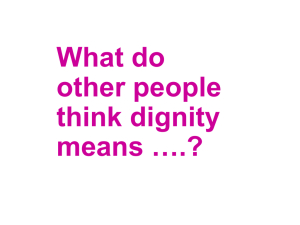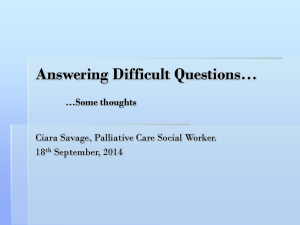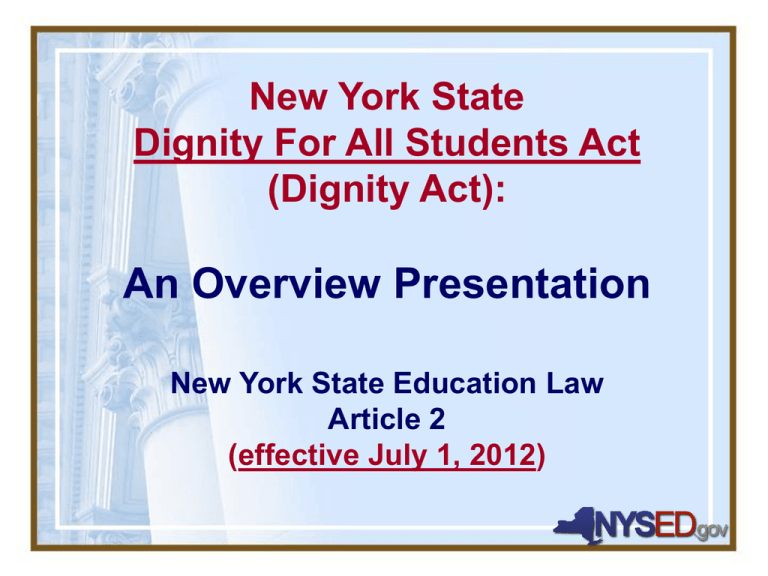
New York State
Dignity For All Students Act
(Dignity Act):
An Overview Presentation
New York State Education Law
Article 2
(effective July 1, 2012)
Dignity Act Basics
• Signed into law September 13, 2010
• Takes effect July 1, 2012
• Addresses issues related to harassment and
discrimination in schools – including
amendments to codes of conduct
• Amended State Education Law by creating a new
Article 2 – Dignity for All Students.
• Amended Section 801[a] of State Education Law
regarding instruction in civility, citizenship, and
character education by expanding the concepts of
tolerance, respect for others and dignity
It is hereby declared to
be the policy of
New York State to
afford all students in
public schools an
environment free of
discrimination
and harassment.
Dignity Act Task Force
OCEANSIDE UNION FREE SCHOOL DISTRICT
Dignity Act Task Force
Work Groups
• State Policy & Implementation
– Co-Chairs: NYSED & NYCLU
• Local Policy & Implementation
– Co-Chairs: NYSED & GLSEN
• Professional Development
– Co-Chairs: NYSCSS (for NYSED) & ADL
• Curriculum & Instructional Design
– Co-Chairs: NYSED & NYSUT
• Outreach
– Co-Chairs: NYSED & Empire Pride Agenda
No student shall be
subjected to
harassment,
discrimination, or
bullying by employees
or students
–
–
–
–
–
–
–
–
–
–
–
No student shall be subjected to
discrimination based on their:
actual or perceived race
color
weight
national origin
ethnic group
religion
religious practice
disability
sexual orientation
gender identity, or
sex
What sites and events are covered by the Dignity Act?
• The Dignity Act applies to all
public schools, BOCES, and
charter schools.
• The Dignity Act applies to
incidents on school property (in a
school building, athletic playing
field, playground, parking lot,
school bus)
• The Dignity Act applies to public
school sponsored functions
(school-sponsored extra curricular
events or activities)
How Does the Dignity Act Relate to SAVE requirements
• The Dignity Act impacts the
following SAVE
requirements:
– Code of Conduct
CR 100.2(l)
– Uniform Violent Incident
Reporting (UVIR)
CR 100.2(gg)
Dignity Act § 11: Harassment – the creation
of a hostile environment by:
conduct, verbal threats, intimidation or
abuse that reasonably causes or would
reasonably be expected to cause a student
to fear for their physical safety
conduct, verbal threats, intimidation or
abuse includes but is not limited to
conduct, verbal threats, intimidation or
abuse based on a person's actual or
perceived race, color, weight, national
origin, ethnic group, religion, religious
practice, disability, sexual orientation,
gender or sex.
Bullying and Federal Civil Rights Violations
School districts may violate Federal civil
rights statutes and U.S.E.D. regulations
when peer harassment based on race,
color, national origin, sex, or disability is
sufficiently serious that it creates a hostile
environment and such harassment is
encouraged, tolerated, not adequately
addressed, or ignored by school staff.
www.stopbullying.gov/topics/civil_violation/index.htm
How Does the Dignity Act Relate to Codes of Conduct
§ 12. Discrimination and
Harassment Prohibited
No student shall be subjected to
harassment by employees or
students on school property or at
a school sponsored function;
nor shall any student be subjected to discrimination
based on a person's actual or perceived race, color,
weight, national origin, ethnic group, religion, religious
practice, disability, sexual orientation, gender identity, or
sex by school employees or students on school property
or at a school sponsored function.
How Does the Dignity Act Relate to Codes of Conduct
An age-appropriate version
of the policy
written in plain-language
shall be included in the
code of conduct
NOTE: Codes of Conduct are to be posted on the school web site
How Does the Dignity Act Relate to School Staff
§ 13. Policies and Guidelines
Boards of Education shall create policies and guidelines that shall
include, but not be limited to:
– Policies to create a school
environment free from
discrimination or harassment
– Guidelines to be used in school
training programs to raise the
awareness and sensitivity of school
employees to potential
discrimination or harassment
– Guidelines to enable employees to
prevent and respond to
discrimination and harassment
The Dignity Act and School Employees
EMPLOYEE TRAINING NOTE
• At least one employee in each school must be
trained to be the Dignity Act Coordinator.
• The Dignity Act Coordinator must be accessible to
students and other employees for consultation
and advice – as needed
• There is no requirement to hire a new employee to
fulfill this role – an existing person may receive
the training
http://pediatrics.aappublications.org/content/early/2011/04/25/peds.2009-3415.full.pdf
http://well.blogs.nytimes.com/2011/04/27/school-nurses-see-both-bullies-and-victims/#more-51757
The Dignity Act & Student Health
• Bullying can result in physical injury, social and
emotional distress, and even death.
• Victimized youth are at increased risk for mental health
problems such as depression and anxiety,
psychosomatic complaints such as headaches, and
poor school adjustment.
• Youth who bully others are at increased risk for
substance use, academic problems, and violence later
in adolescence and adulthood.
www.cdc.gov/ViolencePrevention/pdf/Bullying_Factsheet-a.pdf
Additional Dignity Act Requirements
§ 13. Policies and Guidelines
Boards of Education shall create policies and guidelines that shall
include, but not be limited to:
– Guidelines relating to the development of
nondiscriminatory instructional and counseling methods
– Requirement that at least one staff member at every
school be thoroughly trained to handle human relations
in the areas of:
Race
Color
National Origin
Weight
Ethnic group
Religion
Religious practice
Disability
Sexual
orientation
Gender
identity
Sex
The Dignity Act and Student Instruction
• Education Law §801-a –
Instruction in Civility,
Citizenship, and Character
Education
• Grades K-12
• Honesty, tolerance, personal
responsibility, respect for
others, observance of laws,
courtesy, dignity.
The Dignity Act and Student Instruction
• Tolerance, respect
for others, and
dignity include
awareness and
sensitivity to
discrimination or
harassment and
civility in relations
of people of
different:
–
–
–
–
–
–
–
Races
Weights
National origins
Ethnic groups
Religions
Religious practices
Mental or physical
abilities
– Sexual orientations
– Gender identity
– Sexes
The Board of Regents and NYSED
To prepare for the implementation of
the Dignity Act by July 1, 2012;
regulatory, policy, and procedural
requirements must be developed,
promulgated, and enacted by the Board
of Regents, the State Education
Department, and school districts.
At the January 2011 meeting of the
Board of Regents, staff recommended
the formation of a Dignity Act Task
Force comprised of key stakeholder
groups, advocates, and Department
staff to guide the implementation
process.
Why is the Dignity Act needed in New York State?
• The Dignity Act
promotes civility and
creates a safe
nurturing environment
• The Dignity Act
provides a response to
students who are
harassed and bullied at
school.
Why is the Dignity Act needed in New York State?
• A survey conducted by
(Gay, Lesbian, and Straight Education Network)
in 2009 revealed that more than 1/3 of LGBT
students in New York State stated that
harassment, bullying, and name calling are
serious problems in their schools.
• This included harassment based on a person’s
weight, physical appearance, and their actual
OR PERCEIVED sexual orientation.
Recent Refugees to NYS of Various National Origins and Ethnic Groups
A total of 4,560 refugees resettled in NYS in FFY 2010, a 3% increase
over 2009. Upstate New York resettled 4,099 refugees (90%) and NYC
resettled 461 refugees (10%)
http://otda.ny.gov/programs/bria/documents/population-report.pdf
School-age
children may
experience
problems with
grade failure,
suspension, and
problems
with their peers
related to teasing
and stigma.
http://www.osborneny.org/NYCIP/ACalltoActionNYCIP.Osborne2011.pdf
The Dignity Act and Uniform Violent Incident Reporting
§ 15. Reporting by Commissioner
The commissioner shall create a procedure
under which material incidents of
discrimination and harassment on school
grounds or at a school function are reported
to the department at least on an annual basis.
Such procedure shall provide that such
reports shall, wherever possible, also
delineate the specific nature of such incidents
of discrimination or harassment, provided
that the commissioner may comply with the
requirements of this section through use of
the uniform violent incident reporting system.
What resources will be available to assist schools in
the implementation of the Dignity Act?
• www.p12.nysed.gov/dignityact
– Model Code of Conduct
– Model Curriculum Materials
– FAQs (students/parents and faculty/staff)
• NYSED P-12 News and Notes Articles
• New York State Center for School Safety
• DASA@MAIL.NYSED.GOV
• Dignity Act Facebook Page
• Dignity Act Public Outreach Forums
• Dignity Act Speakers @ Statewide Conferences
http://regions.adl.org/new-york/pdfs/npfh-ny-resource-guide.pdf
Who can schools contact for assistance with the
Dignity Act?
• NYS Education Department
– DASA@mail.nysed.gov
– 518-486-6090
• NYS Center for School Safety
– scss@ulsterboces.org
– 845-255-8989


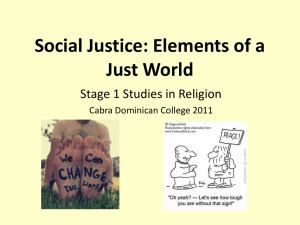
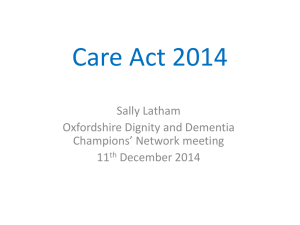
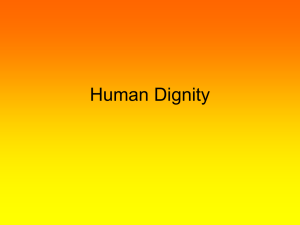


![4[1]._a_man_as_a_person](http://s2.studylib.net/store/data/005226893_1-b67b2be2c3623c1c44b6baa80b997c62-300x300.png)
